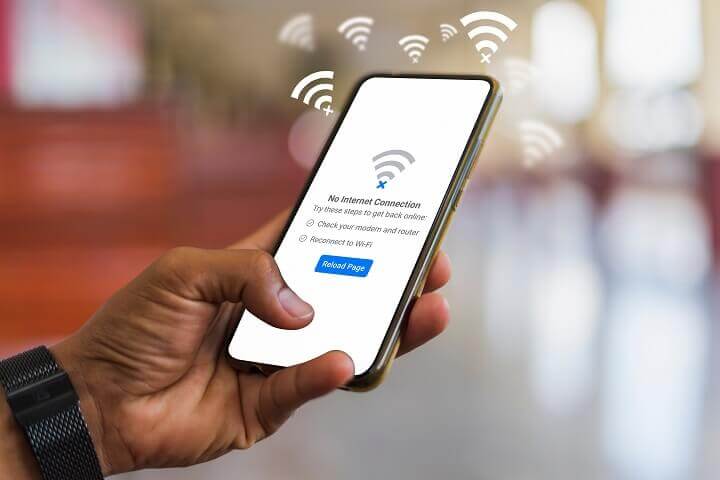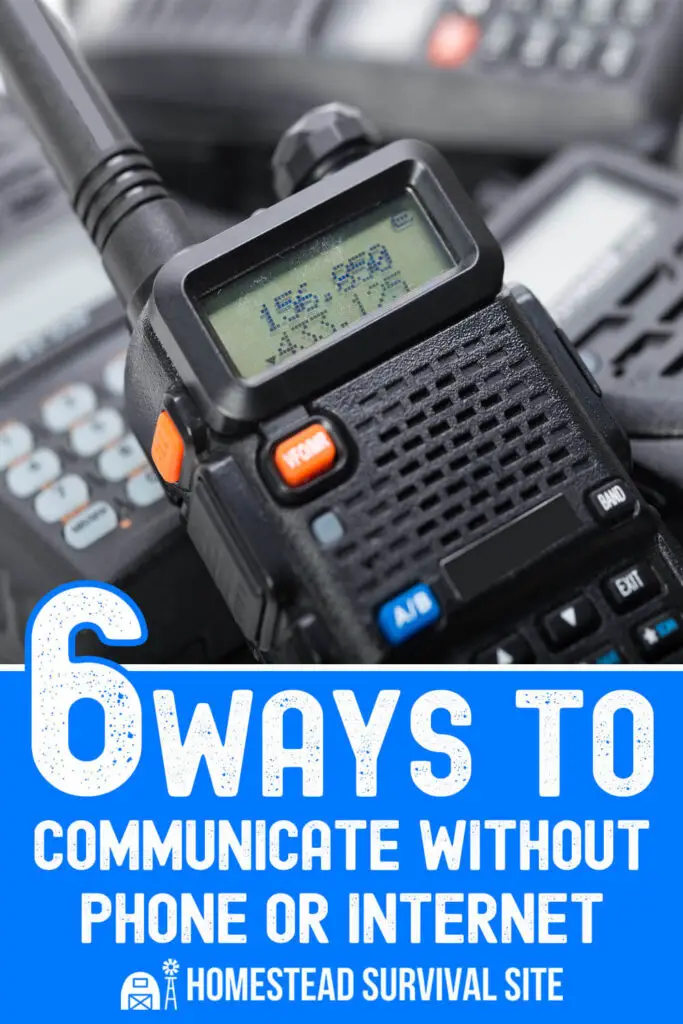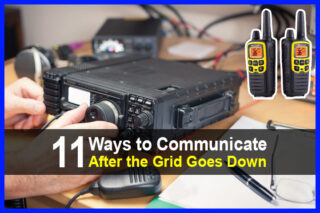Estimated reading time: 6 minutes
New York City officially ended its pay phone era on May 23, 2022 when workers removed the city’s last functioning public phone booths from midtown Manhattan. Plans are to replace the stalls, which went straight to a museum, with a free public WIFI kiosk.
Pay phones – and land lines in general – have gone the way of the dinosaurs as they have been replaced by cellular technology and internet communication. However, have you ever wondered how you would communicate if your cell phone wasn’t working and the internet was down?
The scenario is not as unlikely as it might seem. Natural disasters, which are occurring more frequently and with more intensity, can knock out cellular and internet service. And even when service remains available, you might lose battery power during an extended power outage.
Learning about and acquiring other forms of communication is a vital part of emergency preparedness. This article will review six alternative ways to communicate.
Want to save this post for later? Click Here to Pin It On Pinterest!
How to Communicate Without Phone or Internet
1. HAM Radios
Although you may think of amateur radios only in terms of receiving news and information in a crisis, there are systems that allow two-way communication. In fact, many search and rescue teams use them as their main means of communication.
Since HAM radios are regulated by the FCC, you’ll need a license to operate one, and they are a bit tricky to master. However, the investment may pay off in an emergency when you’re able to send and receive messages many miles away. Some models will even connect people across the world.
By the way, the word “ham” was first used back in 1908 in a derogatory sense to describe amateur radio operators. The operators took the term on as a badge of honor, and it stuck through the years.
This President Lincoln II Plus 10 and 12 Meter Ham Radio is available on Amazon. But before you buy one, you might want to read this.
2. CB Radios
Primarily used by truckers and other commercial drivers, Citizens band (CB) radios are another form of emergency communication to consider. Although CBs are regulated by the FCC, you do not need a license to operate one.
A CB has an average broadcasting range of five to 25 miles and offers two-way communication. Under certain conditions, the range can stretch far longer. Multiple CBs in a local area share the same frequency channel, but only one CB radio can transmit at a time.
Amazon sells the Cobra HHRT50 Road Trip CB Radio. Here is how to use one.
3. Walkie-Talkies
These handheld, battery-powered radios can be used for two-way emergency communications within short distances. You don’t need a license, and they are easy to operate.
Many walkie-talkies have a range of 1 to 10 miles. You may even have a set at home that your kids use for fun. However, it may be wise to invest in a quality set for emergency preparedness.
The Midland 50 Channel Walkie Talkie is waterproof and offers a 36-mile range in areas with little obstruction.
4. Satellite Phones
As their name implies, these phones rely on satellites to operate rather than cellular towers. That means they can work when other forms of communication are down and even when you are in a remote location.
However, the flip side is that these devices should only be used in emergencies since all satellite calls are traceable, and you’ll need to purchase a subscription plan to use the device.
The Spot X with Bluetooth 2-Way Satellite Messenger is on Amazon. You'll also have to purchase a subscription for Globalstar Satellite Network.
5. Morse Code
You’ve probably seen movies or read novels in which someone has saved the day by using Morse Code. Invented by Samuel Morse in 1844, the code that bears his name is still a valuable way of communicating when you cannot use your voice.
Morse code uses a series of dots, dashes, and spaces to send textual messages through light flashes, sound waves, signal letters, electric current, or signal flags. It’s relatively easy to learn and use.
However, like any other language, it does take some practice and diligence to master. Here’s a fun-to-watch video that explains Morse Code, and here is a how-to video guide.
6. Tap Code
Originally used as a way for American prisoners of war in Vietnam to communicate with each other, tap code (also called knock code) uses a timed system of taps to communicate. You can make the tapping sounds on just about anything you have handy, including walls or metal pipes.
This article gives a brief history of tap code. And this video provides a short lesson on how to use tap code for communication.

How to Prepare for Life Without Phones and Internet
Just as you do by stockpiling food and water and filling your bug out bag with supplies, preparation is essential for communication during a crisis. In addition to learning the above communication tools, make communication options part of your emergency family plan.
1. Plan Safe Meeting Locations
Emergencies happen when you least expect them. Your kids might be at school or at a sports activity. You might be at work or the grocery store.
Since normal communication systems may go down, it’s a good idea to identify safe meeting locations. Depending on the emergency situation, you should choose a spot both inside your home (such as the basement if you need to take cover) and outside your home (such as a nearby park if outdoors is safer).
2. Find Evacuation Routes
Many disasters, such as fast-moving wildfires, can shut down roads in a hurry. In addition to your home and a close neighborhood meet-up spot, discuss how and where you will get out of the area and meet up outside your immediate community.
3. Familiarize Yourself With The Emergency Policies of Places Your Loved Ones Frequent
This step is important if you have a loved one living in an assisted living facility or a child attending school or daycare. Also, consider ahead of time what you will do with your pets if you have to vacate your home in a hurry.
4. Make a Contact List
Make a written list of names, phone numbers, and addresses of local and out-of-state emergency contacts for each family member’s bug out bag. Put a copy in your car too. If phone and internet services are down, you will not have another way of accessing that information.
It’s a good idea to have this list posted in your home (perhaps on the refrigerator) so babysitters and other visitors to your home have a copy.
5. Conduct a Practice Drill
Discuss with your children how and where they can find you if you are separated during an emergency. None of us knows how we will react during an emergency, but practicing different scenarios ahead of time can help give us peace of mind.
Like this post? Don't Forget to Pin It On Pinterest!













CB radios, whether base station, mobile, or walkie-talkie,is probably the most viable option here. I’m a ham, but I know my family members are not willing to study for the licensing tests. It’s out of the question for them. Too technical. BTW, it’s not “a ham radio.” “Ham radio” is a service, and there is ham-radio equipment.
Homestead Survival Site: Pleas make the font BLACK in this box we have to write in. I can hardly see this light gray font!
Completely agree especially about this lousy gray font!! It’s very bad and is poor for vision. Even in young people. It does nothing to improve your site and in reality does more to degrade your site.
Completely agree. It appears world wide. Really hard to see. Should oughta be banned. Pronto.